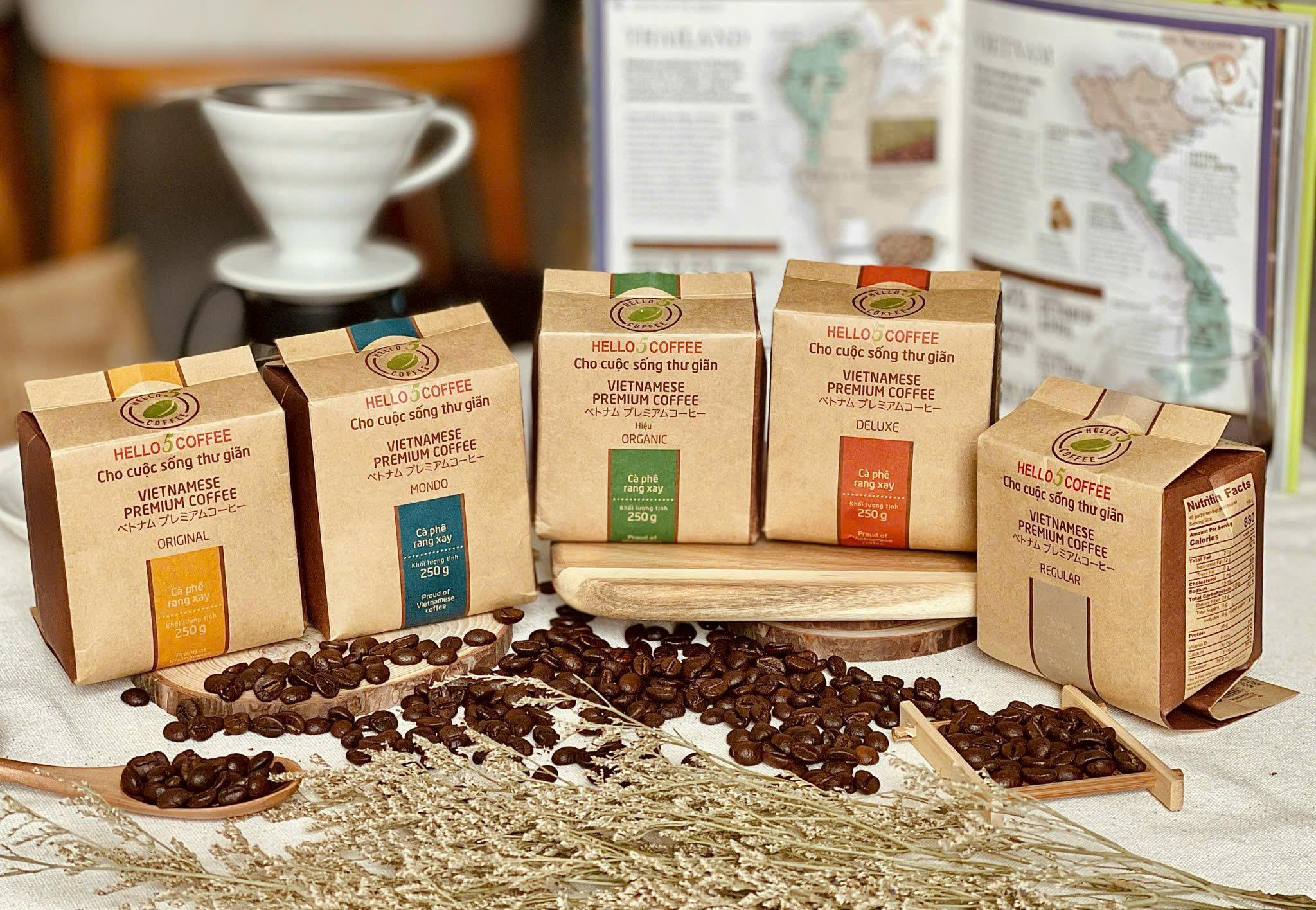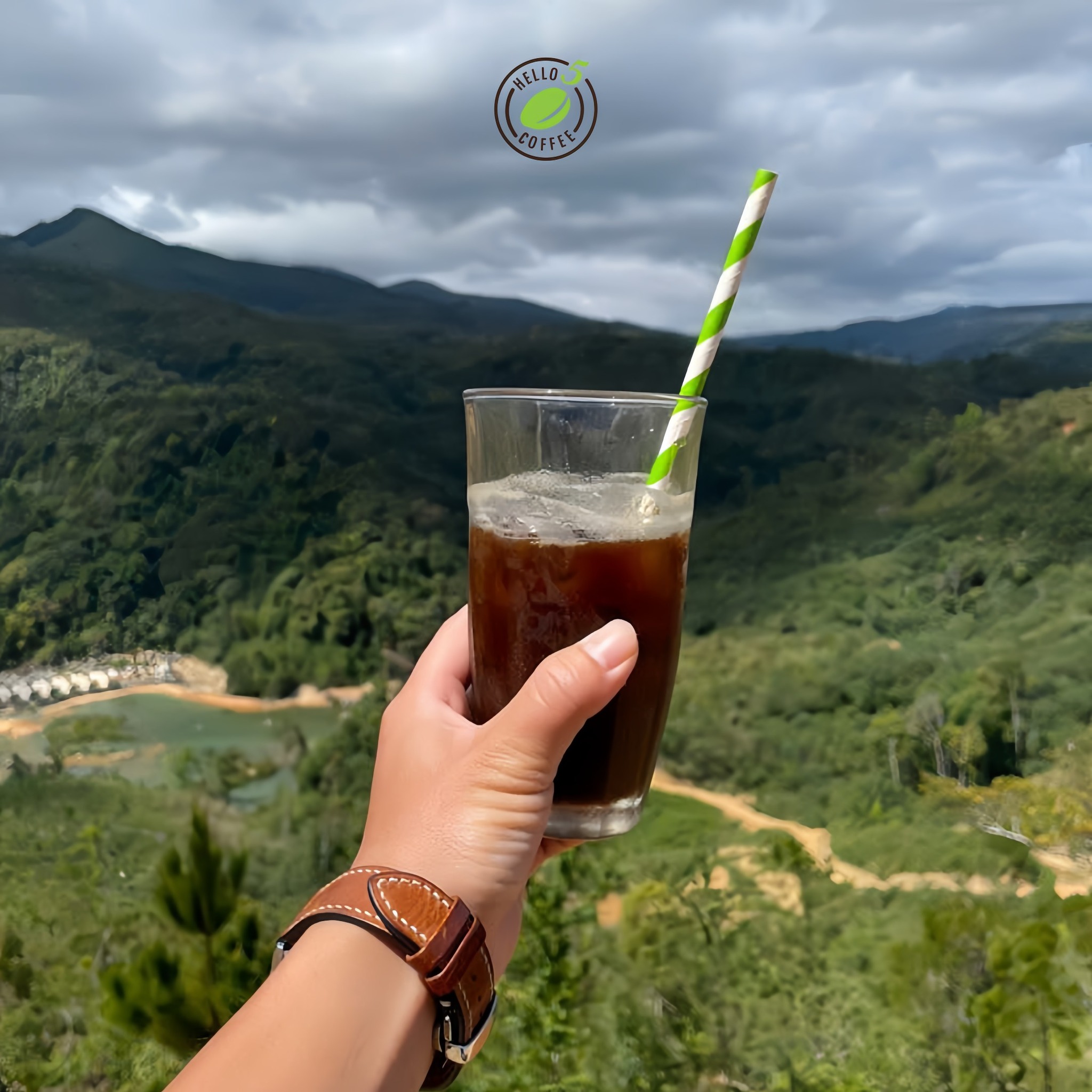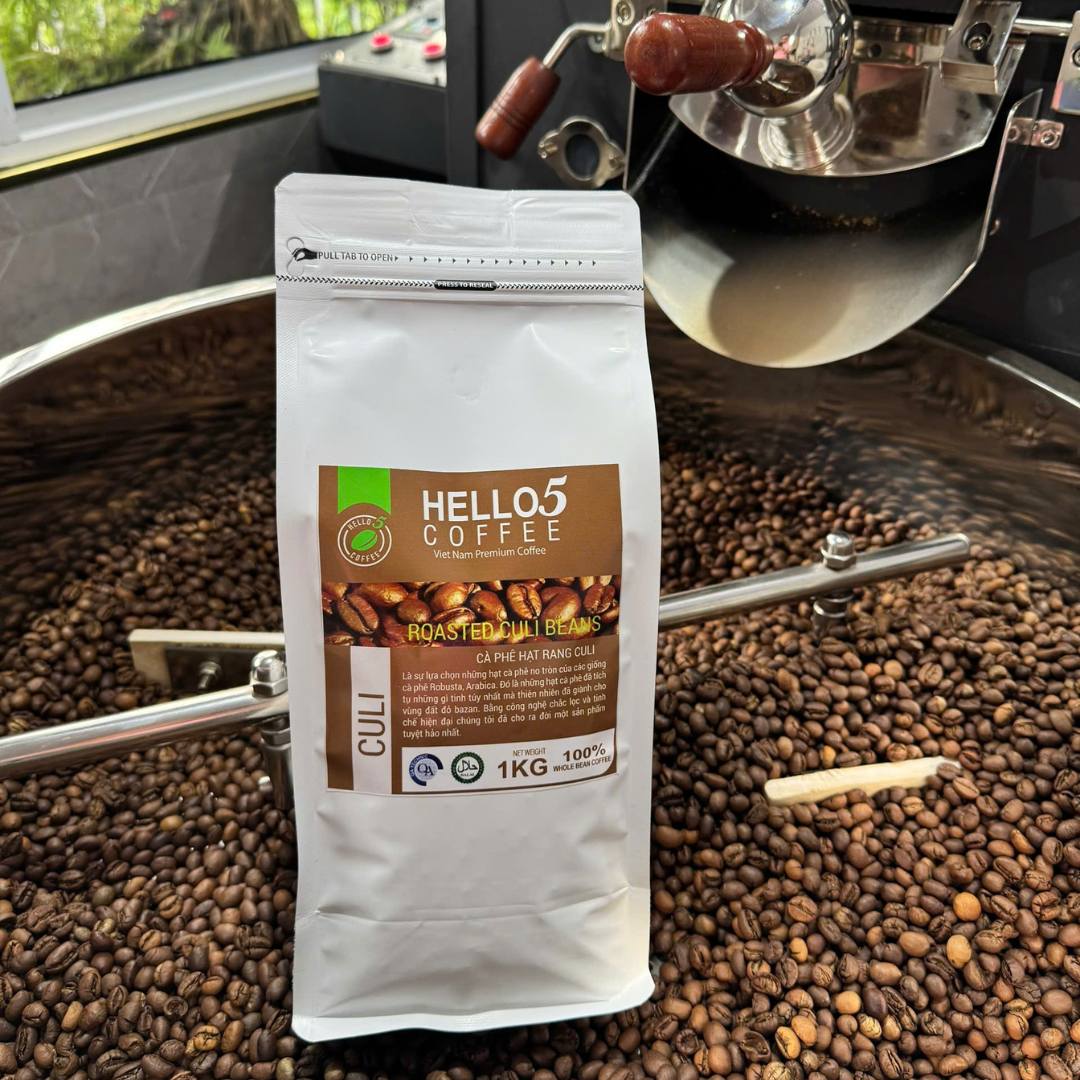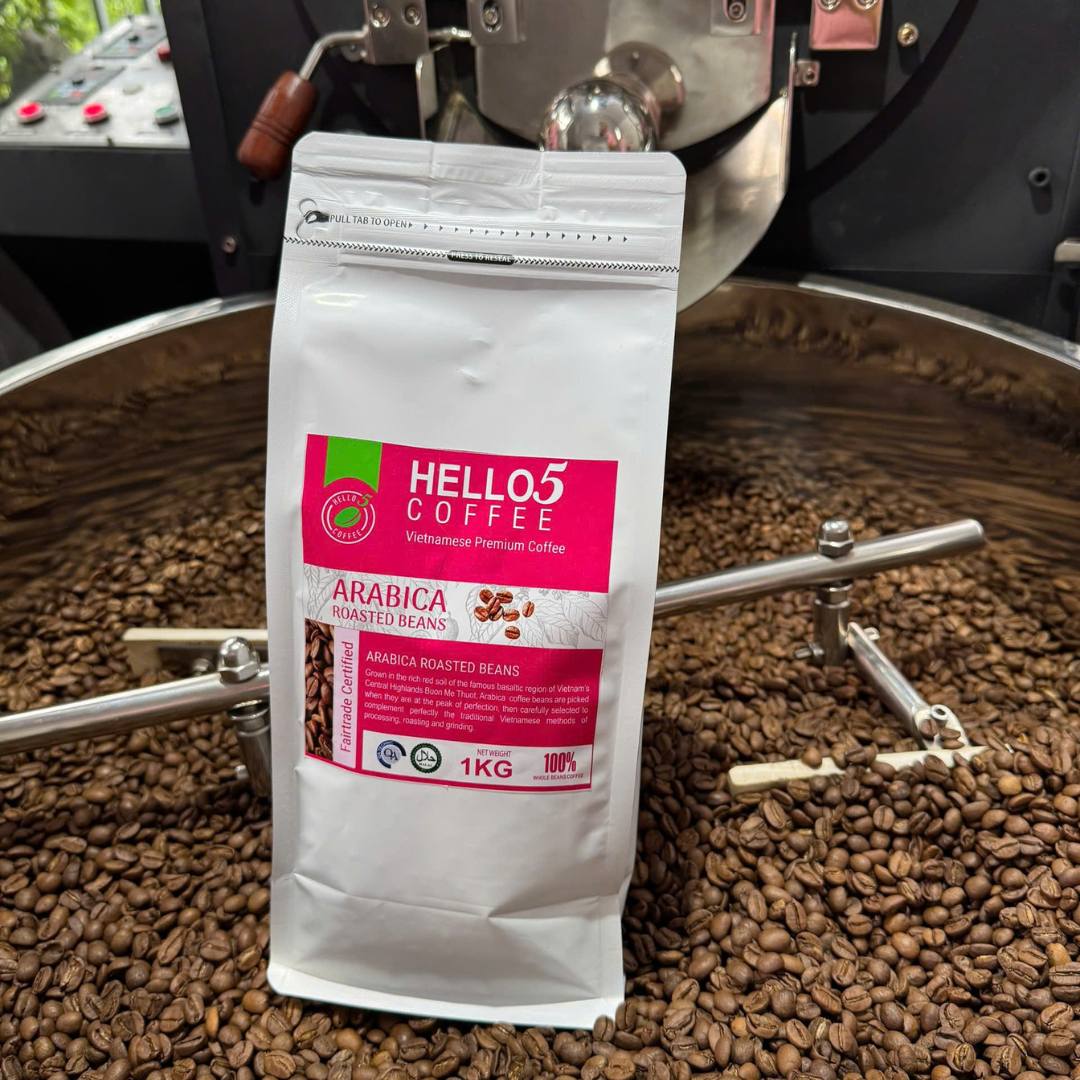Coffee is more than just a drink – it’s a daily ritual and a cultural symbol in many countries. Among the different types of coffee, roasted and ground coffee stands out for its rich aroma and distinctive flavor. Made from raw green beans that are carefully roasted and ground, it is the form of coffee most people enjoy at home, in cafés, or on the go. In this article, we’ll explore what roasted coffee is and how to recognize quality roasted coffee.
What is roasted and ground coffee?
Roasted and ground coffee is created from raw coffee beans (also called green coffee beans) after undergoing a roasting process at high temperatures. During this stage, a series of chemical reactions, particularly the Maillard reaction and caramelization, occur and form the distinctive color, aroma, and flavor of coffee. The finished product after roasting can be kept as whole beans or ground into powder for use.

In Vietnam, there are many famous roasted coffee brands such as Trung Nguyen, Vinacafe, Rita Vo, Hello 5 Coffee,…
Distinguishing popular types of roasted and ground coffee
1. Arabica coffee
- Distinctive flavor characteristics: Arabica brings an elegant, gentle style with pleasant mild acidity and diverse aromas. Drinkers often perceive fruity and floral notes, sometimes with sweet hints like honey or caramel. The light, smooth aftertaste is what makes Arabica beloved by coffee connoisseurs.
- Popularity level: Accounting for 60–70% of global production, Arabica is considered premium coffee. The most famous growing regions are Brazil, Colombia, and Ethiopia. This type is commonly used for machine brewing, filter brewing, or enjoying pure.
- Who should choose it? Arabica is suitable for people new to coffee or those who prefer elegance, less bitterness, and rich flavors.
2. Robusta coffee
- Distinctive flavor characteristics: Opposite to Arabica, Robusta is stronger and more robust, with nearly double the caffeine content. The distinct bitter taste, woody and earthy aroma, with little acidity, creates a clear “awakening” sensation.
- Applications: Robusta commonly appears in espresso, instant coffee, or is blended to increase strength, body thickness, and create beautiful crema. Many instant coffee brands choose Robusta for its reasonable price and high caffeine content.
- Key differences: Compared to Arabica, Robusta is more “robust,” with fewer layered flavors but more resilient to harsh climate conditions. This is a suitable choice for those who like strong, powerful coffee at an affordable price.
3. Blend coffee (Mixed coffee)
- Characteristics: Blend is a combination of different bean varieties, most commonly Arabica and Robusta. This mixing creates balanced flavors: the mild acidity of Arabica harmonizes with the richness and strength from Robusta.
- Advantages: Blend coffee provides a multi-layered flavor experience, easily adapts to various brewing methods, meeting diverse drinker preferences.
- Disadvantages: If not skillfully blended, the distinctive characteristics of each bean type may be “dulled,” making the overall flavor lack prominence. Quality depends heavily on ingredients and mixing ratios.

Factors affecting roasted and ground coffee quality
There are many factors determining the quality of roasted and ground coffee, the most important being:
- Coffee varieties (Arabica, Robusta, Culi…): Each variety has distinctive characteristics in aroma, taste, acidity, bitterness, and caffeine content. Arabica is generally considered better than Robusta, naturally with higher prices.
- Growing conditions: Altitude, climate, soil, and cultivation methods directly affect bean quality. For example: Arabica from Cau Dat, Da Lat, Lam Dong grown in high mountains at 1600m above sea level with cool climate usually provides more refined flavors.
- Harvesting and processing: Picking methods (hand-picking or strip picking) and processing methods (washed, natural, honey…) also greatly determine the cleanliness and flavor complexity of coffee after roasting. Currently, experts highly rate manual coffee picking along with washed and honey processing methods.
- Roasting process: Temperature, time, and roasting techniques greatly affect coffee flavor. Under-roasting results in harsh acidity, over-roasting easily becomes bitter and burnt, losing aroma. Therefore, roasting formulas are now considered trade secrets of each brand. Famous roasted and ground coffee brands all have standard roasting facilities with very expensive construction investments.
- Post-roasting preservation: Roasted and ground coffee easily loses aroma, absorbs moisture, and oxidizes. Therefore, they need to be stored in sealed packaging with one-way valves, away from light and humidity to maintain the best delicious flavor.
- Grinding method and powder fineness: Fineness must match the brewing method (filter, espresso, pour-over…). Grinding too fine or too coarse affects coffee cup quality.

3 characteristics to identify quality roasted and ground coffee
1. Identifying through specific density
Pure roasted coffee has larger volume compared to adulterated coffee. When roasted at appropriate temperatures, coffee beans expand 1.5–2 times, weight decreases 20–30%. Therefore, when comparing two coffee packages of the same weight, the pure coffee package will look more abundant and feel lighter. Another easily noticeable point is that pure coffee bags that are freshly roasted and ground often show slight swelling due to CO₂ release – completely natural and shows product freshness.
2. Identifying through color
Coffee powder color depends on roasting level: from light golden brown to dark brown. After brewing, pure coffee water usually has a glossy cockroach-wing brown color, clear and beautiful. Meanwhile, blended coffee often has dark or unnaturally colored appearance.
3. Identifying through flavor
Pure roasted and ground coffee has a gentle, subtle, deep aroma that is not harsh or overly strong. When drinking, the clean bitter taste mixed with mild acidity, harmonious and refined – most characteristic in premium Arabica varieties. Conversely, chemically adulterated coffee often has rancid, harsh smells, leaving a heavy feeling, lacking the elegance inherent in pure coffee.

Read now: What makes Vietnamese coffee so special that the world falls in love?
Price of 1kg pure roasted and ground coffee
The price of 1kg pure roasted and ground coffee typically ranges around 10 – 20 USD/kg for common types, depending on bean quality and brand. For specialty coffee, prices can be higher, from 20 – 80 USD/kg. Particularly rare, ultra-premium varieties like Kopi Luwak or Black Ivory cost from 500 USD/kg and above.
When you buy coffee from Vietnam in large quantities, you can save quite a lot of money thanks to competitive prices, abundant supply, and much lower production costs than many other countries. Vietnam is particularly famous for Robusta, with wholesale prices usually just a few USD per kg, much cheaper than retail roasted and ground coffee prices in international markets. This is why many roasters and coffee brands worldwide choose to import coffee from Vietnam to optimize costs while ensuring stable quality.

Now you understand better what roasted and ground coffee is, as well as the factors that make up the quality and value of this coffee type. This is not only a popular beverage but also the essence of coffee culture, beloved worldwide.
As a wholesaler and exporter of Vietnamese roasted and ground coffee, Hello 5 Coffee proudly brings pure coffee sources with rich and stable flavors to global customers. Let us help you spread the flavor of Vietnamese coffee.
Contact Hello 5 Coffee today to buy pure Vietnamese roasted and ground coffee in large quantities at the best prices!
